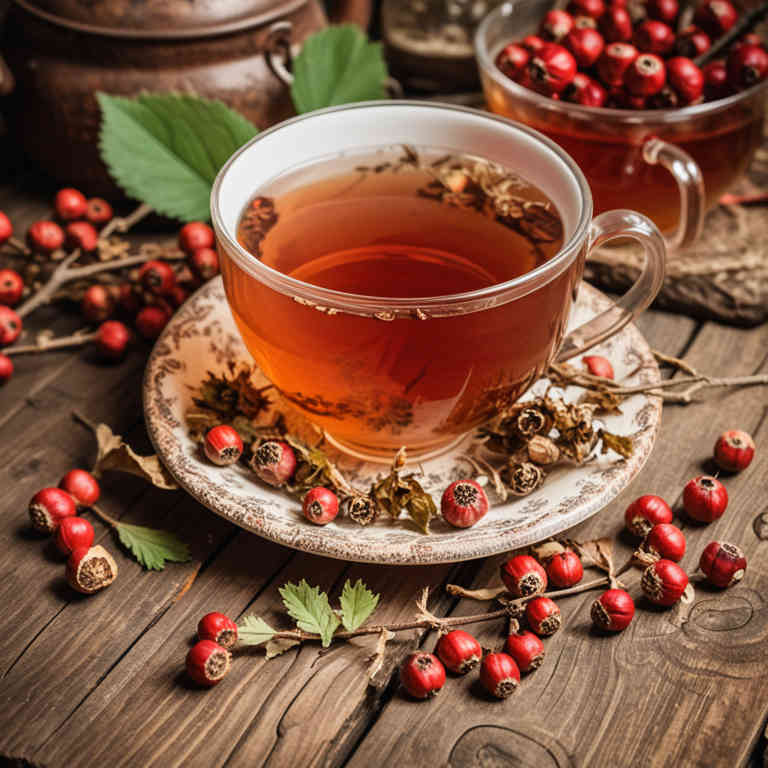Crataegus monogyna tea for medicinal use

Crataegus monogyna tea is a herbal preparation made from the leaves and flowers of the hawthorn tree, known for its calming and cardiovascular benefits.
It is commonly used in herbalism to support heart health, reduce stress, and promote relaxation. The tea is often recommended for individuals experiencing mild anxiety, insomnia, or high blood pressure. Its mild flavor and soothing properties make it a popular choice in traditional medicine.
Regular consumption may help improve circulation and ease symptoms of nervous exhaustion.
Uses
Crataegus monogyna tea has been used to support cardiovascular health and alleviate symptoms of anxiety and insomnia for centuries.
Historically, it was valued in traditional European medicine for its ability to improve circulation and reduce heart-related ailments. In traditional use, it was often prepared as a tonic to strengthen the heart and was used to treat conditions like hypertension and arrhythmia. Modern research has confirmed its potential to lower blood pressure and improve cardiac function, making it a popular herbal remedy today.
It is also appreciated for its calming effects, helping to promote relaxation and better sleep.
Benefits
Crataegus monogyna tea has health benefits such as improving cardiovascular health, reducing stress, and supporting digestive wellness.
This herbal tea is known for its ability to promote healthy blood flow and may help lower blood pressure. It also contains antioxidants that can help reduce inflammation and support immune function. Regular consumption of Crataegus monogyna tea may aid in managing anxiety and enhancing overall well-being.
Its calming properties make it a popular choice for those seeking natural remedies for mild stress and sleep disorders.
Constituents
Crataegus monogyna tea active constituents include flavonoids, proanthocyanidins, triterpenes, and ursolic acid.
These compounds are believed to contribute to the tea's potential cardiovascular benefits by improving blood flow and reducing oxidative stress. Flavonoids and proanthocyanidins may support heart health by strengthening blood vessels and lowering blood pressure. Triterpenes and ursolic acid are thought to have anti-inflammatory and antioxidant properties that may aid in overall wellness.
This herbal preparation is traditionally used to support circulatory health and may help with conditions such as hypertension and mild cardiovascular disorders.
Preparation
To make Crataegus monogyna tea, start by gathering 1 to 2 tablespoons of dried Crataegus monogyna berries, which are also known as hawthorn berries.
Rinse the berries thoroughly to remove any debris or impurities. Place the berries in a heatproof container and pour about 2 cups of boiling water over them. Cover the container and let the mixture steep for 10 to 15 minutes to allow the flavors and compounds to infuse into the water.
Strain the tea through a fine mesh strainer or cheesecloth to remove the berries, and enjoy the resulting herbal infusion either hot or chilled.
Side Effects
Crataegus monogyna tea may lead to cardiovascular benefits due to its high content of flavonoids and polyphenols, which can improve heart function and reduce cholesterol levels.
It is traditionally used to support circulatory health and may help alleviate symptoms of mild hypertension. However, possible side effects include gastrointestinal discomfort such as nausea or upset stomach, especially when consumed in large quantities. Individuals with diabetes should monitor their blood sugar levels, as the tea may affect glucose metabolism.
Additionally, it is important to consult a healthcare provider before use, particularly for those taking medications for heart conditions or other chronic illnesses.